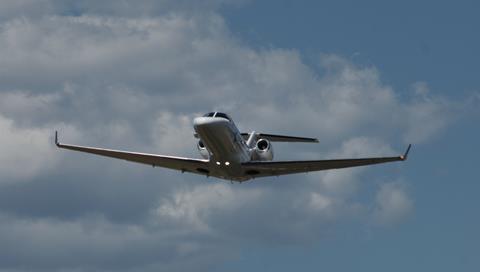Winglet maker Tamarack Aerospace is stressing that several factors other than erroneous deployment of a control surface contributed to a 2019 incident involving a Cessna Citation CJ1+.
That incident prompted a temporary grounding last year of aircraft with Idaho-based Tamarack’s “Atlas Active Winglet” system. Tamarack also entered bankruptcy protection.
The company describes its take on the incident in a statement issued 3 December – the same day the UK’s Air Accidents Investigation Branch released its final incident report.
“It is rare that a single error results in an incident, and this event was no exception,” Tamarack’s statement says. “The safety investigation process should include a thorough analysis of factors contributing to the outcome, with pilot safety being the first priority.”

Tamarack says the grounding resulted from an inaccurate report by the pilot about the incident.
“After the subsequent investigation, we now understand that while an active winglet failure did occur, the pilot report contained inaccuracies that ultimately grounded the fleet for a short time,” Tamarack says.
Specifically, Tamarack says the aircraft did not roll nearly as fast as the pilot claimed. “Data taken from the Citation jet shortly after the incident shows that the aircraft actually rolled at about 4° per second, which aligns with the Tamarack active winglet failure recovery procedure, provided to all customers,” it says.
The Atlas system includes wing extensions with control surfaces that alleviate loads.
AAIB’s report found that an Atlas control surface erroneously deployed during the 13 April 2019 flight from Bournemouth in England, likely due to a short circuit caused by a dislodged screw.
The failure caused the CJ1+ to roll left to a bank angle of 75°. The pilot reported that full right aileron and rudder were “insufficient to control the aircraft”, the report says.
The pilot eventually did regain some degree of control, and landed without injury.
The company’s statement calls attention to the pilot’s response to the uncommanded roll.
“The AAIB reports that the pilot was unfamiliar with the active winglet [aircraft flight manual] supplement, including emergency procedures,” says Tamarack. “The pilot had recently purchased the Citation jet and had not yet acquainted himself with the modification.”
The emergency procedures include reducing speed by idling the throttle and deploying speed brakes.
AAIB did note that “the pilot was not aware of supplementary procedures associated with the modification”.
“The pilot was in a fight-or-flight state… He did not have the capacity to assess alternative actions such as using speed brake and aileron trim,” it adds.
Tamarack also notes that the Atlas supplement to the CJ1+’s flight manual “was not readily accessible to the pilot”, and that the pilot failed to report a previous similar winglet failure.
The FAA and EASA lifted the grounding within months for Citations that had fixes detailed in Tamarack-issued service bulletins. The company insists those bulletins fully address the problem, and that demand for its winglets continues to be strong.
Tamarack has not yet emerged from bankruptcy protection.














































